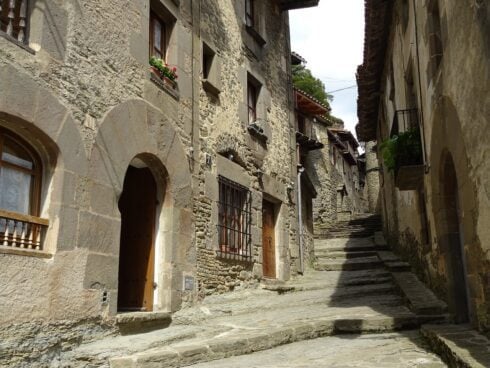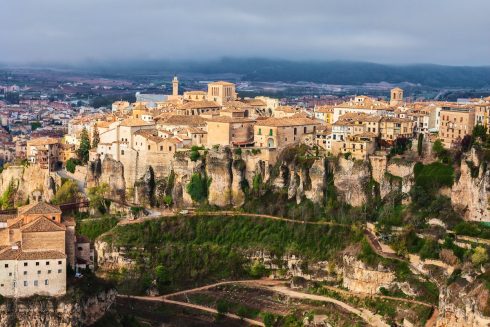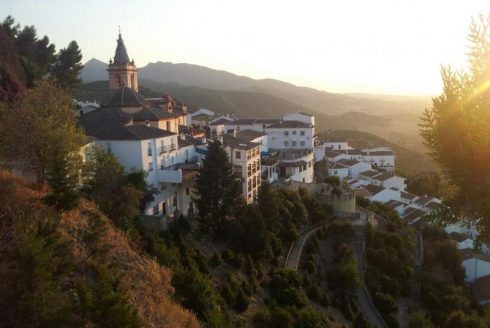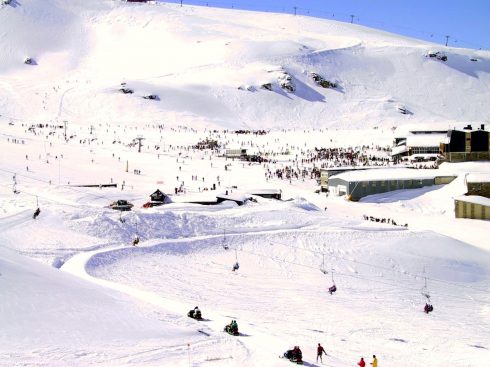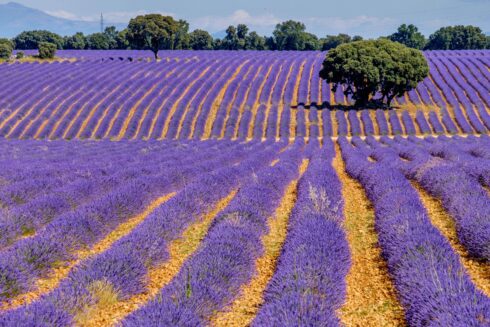Spain has been a centre of Roman, Islamic, Christian and colonial empires which have turned the nation into open-air museum of wonders that move, inspire and send you home with a changed perspective on life.
There are 43 UNESCO sites in Spain – the third-most of any country in the world – including the Christian world’s most famous pilgrimage site, the only preserved Islamic palatine (imperial) city, groundbreaking contributions to the Industrial Revolution and the original documents in which colonialists planned discovery and conquest of the New World.
Coupled with outstanding natural beauty, there’s not enough time even in a yearlong trip to see all the country has to offer.
So to help you scratch the surface of stunning Spain, we’ve gathered together nine UNESCO World Heritage Sites that you just can’t miss on your next Spanish holiday.
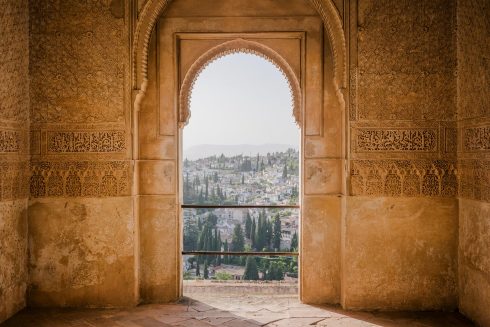
1. Alhambra
Alhambra, Generalife and Albayzín, Granada
Location: Granada, Andalucia
Ticket price: €14+ (to see inside the palace book a tour in advance)
Opening times: 08:30-20:00 in high season and 08:30-18:00 in low season (night tours available)
The Alhambra fortress in Granada is home to Spain’s finest example of Islamic art and architecture. It was among the first Spanish monuments inscribed into the UNESCO World Heritage list in 1984, alongside the Albayzin residential district allowing a precious glimpse into daily life in Muslim Spain.
The Alhambra was the dwelling place of the Nasrid kings, who ruled southern Spain for 250 years and were the last Muslim dynasty before the fall of Granada in 1492. Structures are remarkably in tact, with ancient irrigation systems still functioning, and breathtaking architecture of Islamic epigraphy world-famous for ‘talking’ to visitors of the religious, political and poetic world of Muslim Spain.
The Alhambra was the last site of Islamic rule in Western Europe, which once reached into southern France. When Abu Abdallah Muhammad XII surrendered the keys to King Ferdinand and Queen Isabella he famously said “these are the keys to paradise”. A Spanish legend continues that as Boabdil – as he is known – fled to Morocco in exile he broke down on his last view of the magnificent capital at a viewpoint named Suspiro del Moro (Moor’s Sigh). His mother raged: “You do well, my son, to cry like a woman for what you couldn’t defend like a man”. The debate whether Muhammad XII saved a tolerant people from persecution and slaughter in Christian Spain, or ran in cowardice, continues to this day.

2. Archive of the Indies
Cathedral, Alcázar and Archivo de Indias in Seville
Location: Seville, Andalucia
Ticket price: Free
Opening times: 09:30-17:00 (closed on Mondays and major holidays)
The Archive of the Indies is housed in one of three buildings that make up the UNESCO complex in the heart of Seville, the capital of southern Andalucia. The buildings are the Cathedral of Seville, the Royal Alcazar of Seville and the ancient Lonja de Seville, which houses the General Archive of the Indies.
Each of the three buildings are magnificent in their own right: the Cathedral of Seville is the largest Gothic building in Europe which boasts an Islamic-era (1238) minaret and houses the tomb of Christopher Columbus; the Alcazar dates back to the 10th century as the home of the Islamic Almohad ruler and housed both the Admirals’ Hall and House of Trade from where Spain managed its colonisation of the Indies; the Lonja houses the most important documents of Spain’s discovery and colonisation of the New World.
The three buildings are home to history that shaped the world, from Seville’s status as the sole trading port with the Indies from 1503 to 1718, to the hall where Magellan and Sebastian El Cano planned the first-ever circumnavigation of globe from 1519-1522. Documents in the archive include the Bull of Demarcation when Pope Alexander VI divided the New World between Spain and Portugal, as well as the first maps and plans of the Americas, alongside Christopher Columbus’ journal when he detailed the first documented encounter between Europeans and Native Americans on an island in the present day Bahamas.
Aside from being one of the top UNESCO sites in Spain, Seville is also home to the Catholic country’s most famous Semana Santa religious processions at the end of Easter.

3. Santiago de Compostela
Routes of Santiago de Compostela: Camino Francés and Routes of Northern Spain
Location: Basque Country, La Rioja, Cantabria, Asturias, Galicia
The Route of Santiago de Compostela (Camino de Santiago) is an extensive network of walking trails in northern Spain that lead towards the tomb of the Apostle James the Greater at the church of Santiago de Compostela in Galicia. The church and the old town of Santiago de Compostela is another of the UNESCO sites in Spain.
The Way of Saint James is the most famous pilgrimage in the Christian world. Pilgrims have been walking to the church of Santiago de Compostela (Santiago meaning Saint James in Spanish) since the discovery of a tomb in the 9th century. Tradition says that after Herod Agrippa executed the apostle and brother of John the Evangelist, disciples carried his body by sea to Padron on the Atlantic coast of Galicia, before coming inland for burial at Santiago de Compostela.
The UNESCO site includes cathedrals, churches, hospitals, hostels and even bridges built for pilgrims walking towards Santiago de Compostela. Traditionally pilgrimage was a form of penance for sins, and today more than 200,000 people walk the trail for spiritual growth or simply as a stunning hiking and cycling trail.
Any hiking trip around the Camino de Santiago should include a trip to the magical Las Medulas UNESCO site, featuring honey-coloured peaks in a mountainous region near Ponferrada with in-tact remnants of Roman-era gold mining.
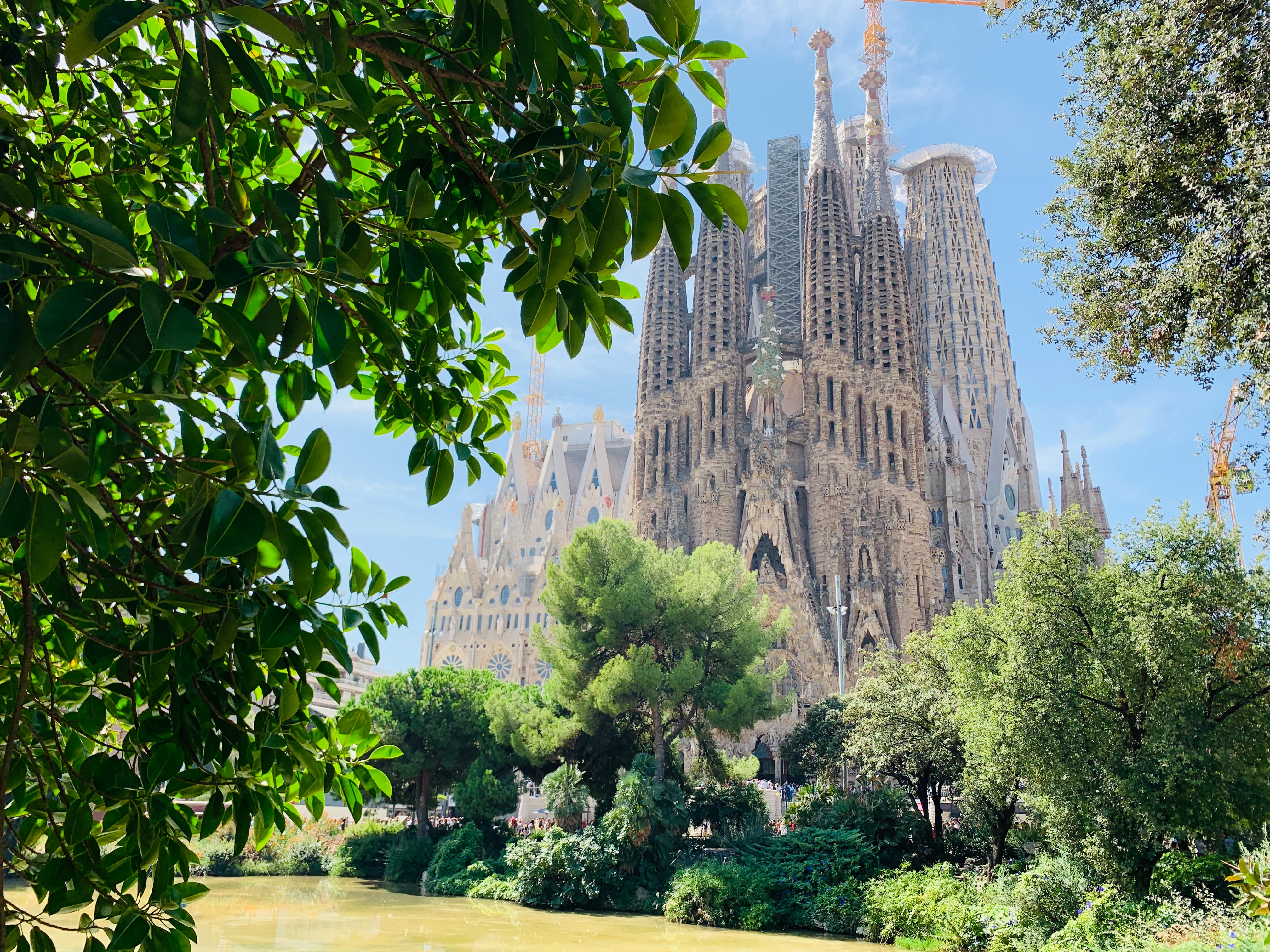
4. Gaudi
Location: Barcelona, Catalunya
Whether you know his name or not, you will know him by his work: Gaudi’s Sagrada Familia is Spain’s most-visited monument year on year, attracting 4.6 million visitors in 2018. The Sagrada Familia basilica is still under construction according to Gaudi’s plans, and expected to reach completion on the centenary of his death in 2026.
Seven properties built by Antoni Gaudi (1852-1926) in or near Barcelona, the capital city of Catalunya, make up the UNESCO listing. The buildings are: Parque Güell; Palacio Güell; Casa Mila; Casa Vicens; Gaudí’s work on the Nativity façade and Crypt of La Sagrada Familia; Casa Batlló; Crypt in Colonia Güell.
Gaudi’s work is associated with modernist architecture, though his work is a mix of crafts like ceramics and stained glass as well as personal passions of nature and religion. The sublime nature of Gaudi’s work has led to his nickname of ‘God’s Architect’ though most importantly Gaudi sought to build public spaces as well as private residences, allowing Barcelona citizens free and unrestricted access to arguably the finest architecture in Spanish history.
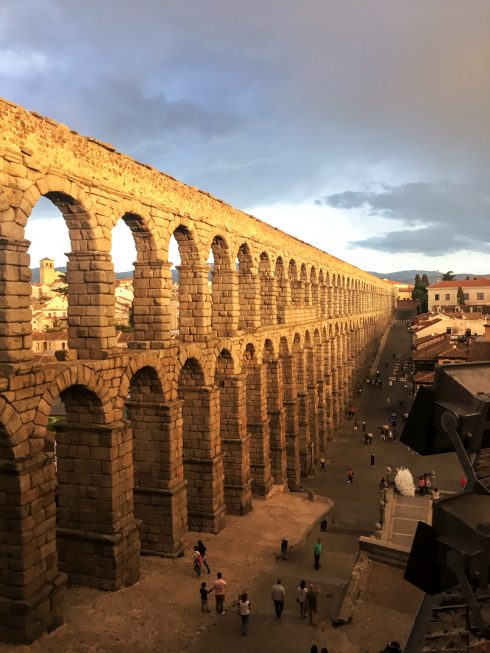
5. Roman Aqueduct of Segovia
Old Town of Segovia and its Aqueduct
Location: Segovia, Castilla y Leon
The Roman aqueduct of Segovia, built around 50 BC, is one of the most remarkable and best-preserved examples of ancient Roman engineering in the world.
The magnificent structure is entirely built without mortar or cement, with a length of 813m, with 128 pillars and a height of 28.5m above ground at its lowest point. Despite its location in the centre of Segovia city (pop. 50,000) the Roman aqueduct is almost entirely original and supplied water from the nearby Rio Frio until the mid 19th century. The Romans even built special sections to allow sand to settle and provide pure, fresh water for the Roman city’s inhabitants.
Spain has two more Roman-era UNESCO sites of note – Merida, the remarkably in-tact ancient capital of Lusitania in eastern Extremadura, and Tarraco, the major imperial and mercantile city in Roman Spain – but the Roman aqueduct of Segovia smack-bang in the middle of a modern city perhaps is most emblematic symbol of the Roman Empire’s continued influence on the modern world.
The region of Castilla y Leon is over an hour’s drive north of Madrid and a little out of the way, so lovers of Roman history should certainly investigate all three UNESCO sites before making the trip.

6. Vizcaya Bridge
Location: River Ibaizabal, Basque Country
Price: €0.45 for a single passenger, up to €15 for a lorry over 6000kgs
Vizcaya Bridge spans 160m of the Ibaizabal estuary, west of Bilbao, and in 1893 became the first bridge in the world to carry people and traffic on a high suspended gondola. It became the model for similar bridges in Europe, Africa and the Americas, and is one of few surviving and in operation.
The Vizcaya Bridge used new lightweight technology of twisted steel cables, and is considered an outstanding architectural iron construction of the Industrial Revolution. The bridge, designed by Basque Architect Alberto de Palacio, solved the tricky problem or allowing the passage of ships on a wide estuary without the need for ramps or raising or lowering of the bridge. Since opening in 1893 the bridge has operated continuously ever since, except during the Spanish Civil War of 1937 to 1941, when damage caused the platform to fall into the estuary.
Vizcaya Bridge is the only construction of the industrial era in this list, but is notable as a remarkable example of design ingenuity that will fascinate lovers of engineering. It’s also conveniently located in the Basque Country near San Sebastian, famous for having the most Michelin starred restaurants per square metre in Europe.

7. The Dolmens of Antequera
Location: Antequera, Andalucia
Price: €1.50
Opening Times: 09:00-18:00 (closed on Mondays)
The Antequera Dolmens Site comprises three large prehistoric stone monuments built during the Neolithic and Bronze Age (10,000BC-1,200BC) and are some of the most important examples of European Megalithism.
The three Dolmens (Menga, Viera and Tholos) are built from large stone blocks that looked like natural formations, but create stunning chambers beneath, used for ritual and funerary purposes. They are nearly indistinguishable from the surrounding natural environment among the natural monuments of La Peña de los Enamorados and El Torcal.
Spain is home to many UNESCO recognised prehistoric sites, such as the cave paintings at Altamira in northern Spain, as well as 758 sites in the Mediterranean basin. However, though the cave art is stunning and well worth the time, you can’t actually visit all of them due to deterioration or lack of easy access. The Antequera Dolmens, on the other hand, are just an hour’s drive inland from Malaga city on the popular Costa del Sol and well worth a visit for lovers of prehistory.
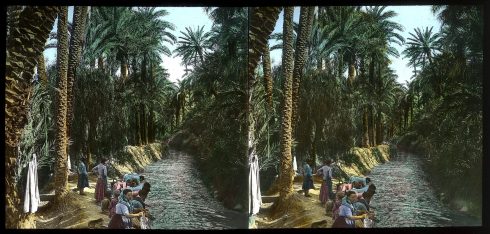
8. Date Palm Groves in Elche
Location: Elche, Valencian Community
The Palmeral or Palm Grove of Elche is home to Europe’s only date palm grove, and forms a fascinating system of agrarian production passed from Muslims to Christians wholly in tact until today.
The Palmeral was originally planted in Roman times, however it was in the 10th century that Arab rulers constructed the rectangular huertos (gardens) and irrigation systems that still function today. Elche is one of the most arid parts of Spain, with annual rainfall under 250mm a year, and so North African agrarian techniques turned the dry land into an oasis fit for a city. Beside providing a unique and rich food source, the date palms provided shade for the cultivation of cereals, forage plants and fruiting trees like pomegranates for human and livestock consumption.
During the reconquista in the 13th century, Christian rulers passed laws that protected the Muslim’s irrigation systems and expanded them to provide water for drinking, industry and agriculture in the heart of the city. Also passed on were techniques to weave date palm leaves into stunning ornaments, which every year during Easter Sunday are sent to the Spanish Royal Family and to the Vatican City for Palm Sunday celebrations. Elche also holds an annual palm weaving contest over Palm Sunday, where contestants turn a white palm leaf into a biblical scene for the top spot.
The Palmeral of Elche is a symbol of many Muslim contributions to Medieval Europe, including the production of sugar from sugar cane, the production of paper and pulp, silk, advances in perfume making, translations of the works of Greek classical philosophers and mathematicians, watermills and the Archimedes’ screw.
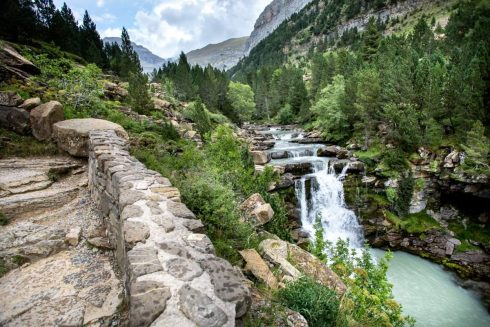
9. Mont Perdu, the Spanish Pyrenees
Location: Pyrenees mountains, Aragon
The UNESCO site of Mont Perdu, on the border between Spain’s Aragon region and France, is much more than the 3,352m mountain peak: it includes two of Europe’s deepest and largest canyons on the Spanish side and maintains an ancient pastoral culture among seven cross-border mountain communities.
The Mont Perdu site is an area of 30,369ha of striking geological forms, with meadows, lakes, caves and forests. The network of trails, roads, bridges, houses and hospices are at the centre of an agro-pastoral system in which until today pastors and shepherds will drive their livestock to higher pastures during the summer months. While these ways of life have near disappeared across Europe, here it will not be strange to find endless flocks of sheep blocking the road.
The Mont Perdu region joins southern Andalucia’s Doñana national park, Tenerife’s heavenly Teide volcanic peak and the Garajonay forests on La Gomera island as the Spanish areas of outstanding natural beauty to make the list of UNESCO sites in Spain. Aside from its inherent beauty and ancient lifestyles, however, the Mont Perdu region is a wonderful place for lovers of hiking, as well being positioned close to Spain’s number one skiing destination of Baqueira-Beret.
We hope this list of UNESCO sites in Spain inspires you to delve into Spanish history and culture on your next visit.
READ MORE:
- RANKED: Top five ski resorts in Spain
- Locals offered sneak peek inside new Dolmens Museum in Antequera in Spain’s Andalucia
- Pilgrims become litter pickers as they walk in bid to clean up Spain’s Camino de Santiago
- SAY NO MOOR: The ancient Moorish technique saving Alicante city from flash floods
- A tour of Spain’s UNESCO World Heritage Sites
Click here to read more Olive Press Travel News from The Olive Press.


